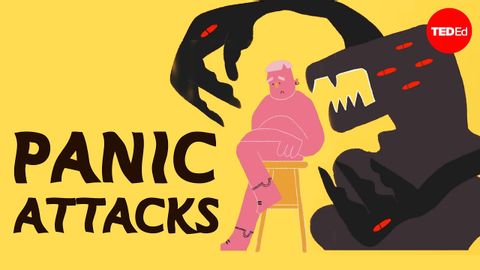パニック障害の原因と予防法は?- シンディ・J・アロンソン (What causes panic attacks, and how can you prevent them? - Cindy J. Aaronson)
林宜悉 が 2020 年 10 月 23 日 に投稿  この条件に一致する単語はありません
この条件に一致する単語はありませんUS /æŋˈzaɪɪti/
・
UK /æŋ'zaɪətɪ/
US /ˈkɑɡnɪtɪv/
・
UK /ˈkɒgnətɪv/
- adj.認知の;認知能力の;認知発達の;認知療法の
US /pɚˈsɛpʃən/
・
UK /pəˈsepʃn/
- n. (c./u.)知見 : 見識 : 感じ方 : ものの見方;知覚;見方;洞察力
エネルギーを使用
すべての単語を解除
発音・解説・フィルター機能を解除
